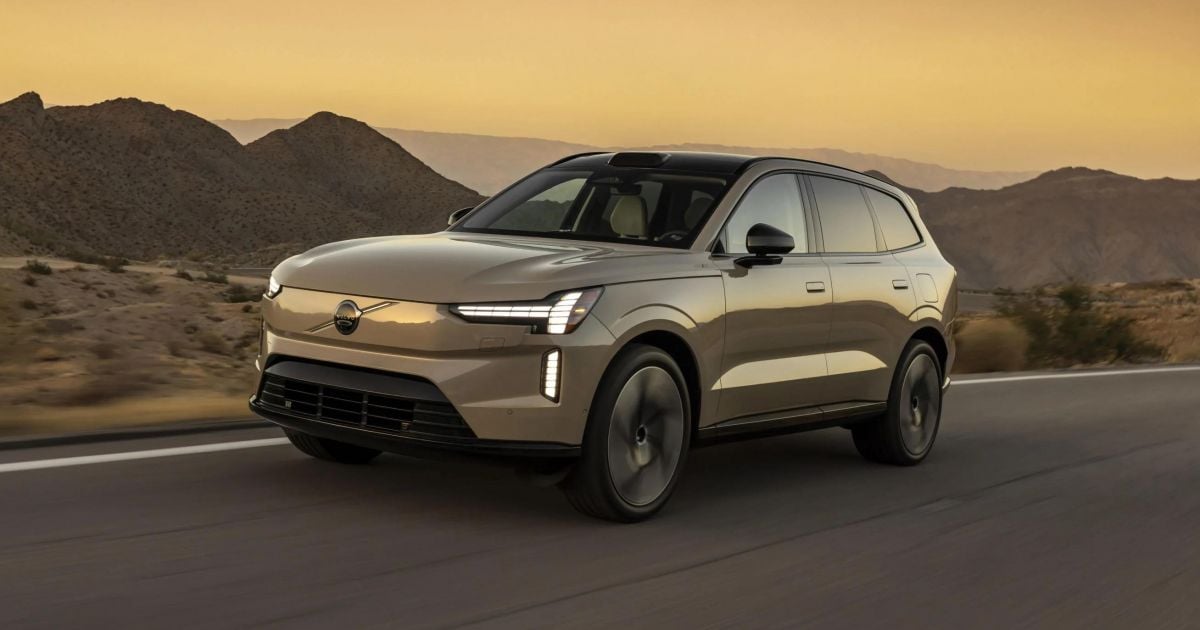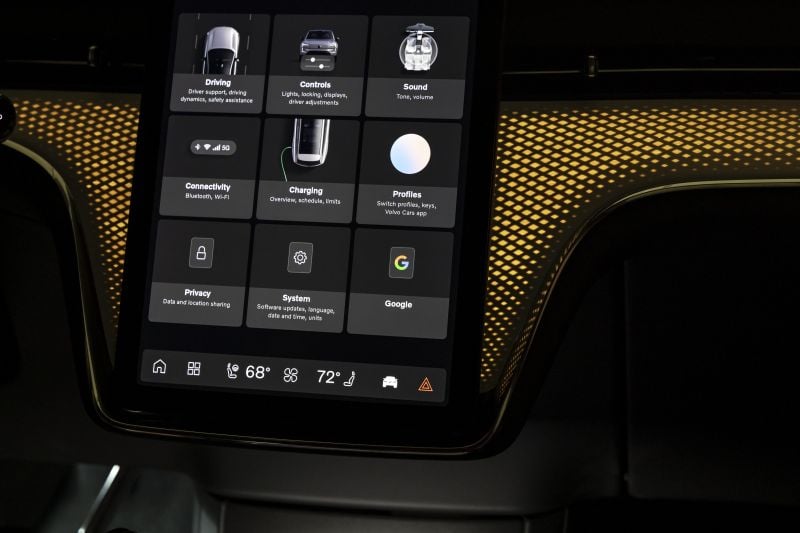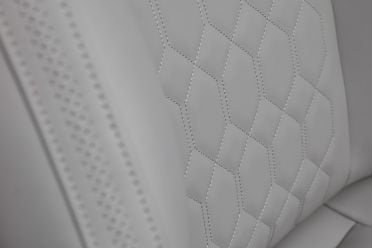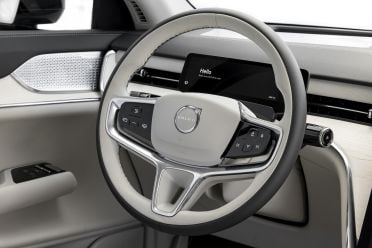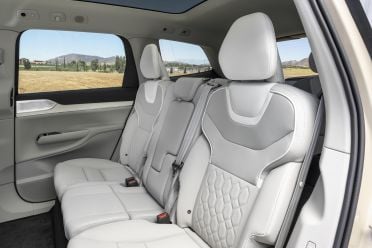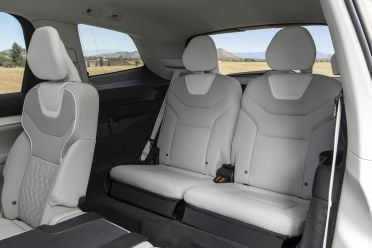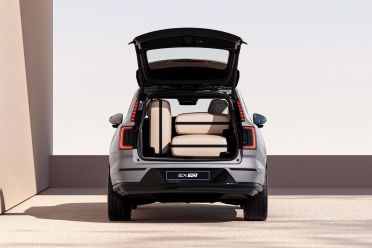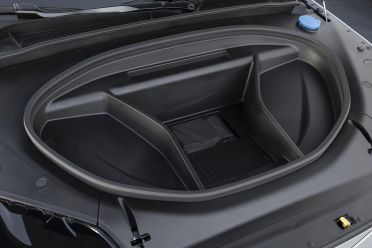Volvo is going all-electric and it hopes the seven-seat EX90 will sway family buyers away from internal combustion cars.
With Volvo committing to an all-electric future by 2030 – and even earlier in Australia – it has commenced the rollout of its brand new suite of electric vehicles to replace existing model lines.

While the XC90 will be facelifted as a plug-in hybrid to see it through to 2030, the EX90 is its all-electric successor.
We’ve had the chance to have a first drive at the vehicle’s international launch in the USA as a guest of Volvo.
How does the Volvo EX90 compare?
View a detailed breakdown of the Volvo EX90 against similarly sized vehicles.

How much does the Volvo EX90 cost?
Volvo hasn’t announced Australian pricing yet for the all-new EX90, but we expect it to be around the $130,000 mark before on-road costs.
Once we have this information we’ll have a price and specifications story, along with an update to this review.
What is the Volvo EX90 like on the inside?
Volvo has gone for a minimalist approach inside the EX90’s cabin. Buttons have been banished, and a Tesla-esque approach has been targeted to condense all the vehicle’s functions to the central touchscreen.
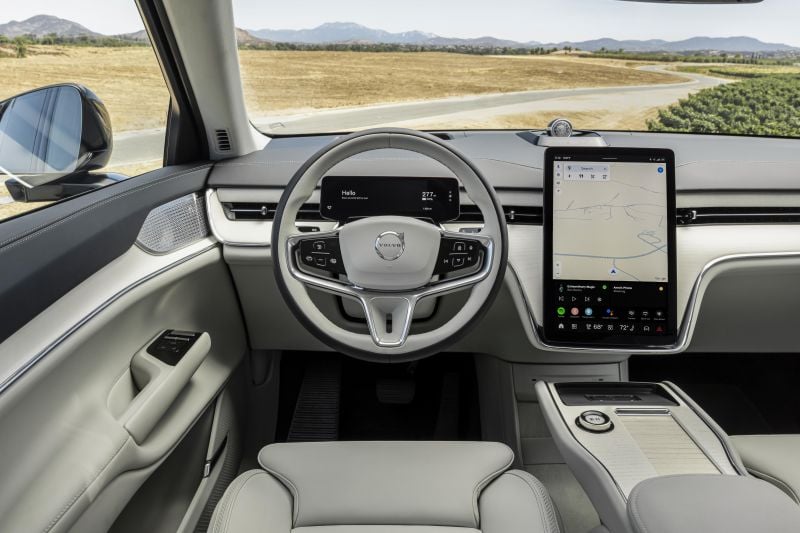
One of the main reasons the EX90 has been extensively delayed is due to software integration issues. But, in my opinion, the wait will be worth it for the benefit of vertical integration.
Car companies typically rely on tier one suppliers to supply all the electronics and components to make a vehicle work. There’s a mixture of engine modules, infotainment modules, safety system modules, central locking modules, climate modules… the list goes on.
The car company then integrates all of these within a central technology stack. Changes to any of these systems then requires input – and additional cost – from tier one suppliers. Things never happen in realtime, which is why you typically have to wait until a facelift rolls around to implement changes.
With the SPA2 platform that EX90 sits on, vertical integration was the key. Volvo brought as many of the software systems in house as possible to ensure it was in charge of the stack, and it was in charge of changes and interactions within that stack. It’s a step change for a car company that has always done things a certain way.
And, it’s the primary reason the EX90’s launch was delayed so much.
As a result, Volvo now builds its infotainment system around Android Automotive OS (not Android Auto), which allows the manufacturer to build apps and technologies around the base operating system. The end result is a pretty smooth experience with extended functionality that can be updated on the fly with over-the-air updates.
Core to the system is the Google Assistant, which can use cloud-based voice processing to understand commands, and a litany of apps that can be added to the system to further functionality.
Volvo now uses an electronic key to access the vehicle. The owner can use an NFC card (which requires a physical tap, and looks like a credit card), their phone, or an Apple iPhone specific key.
Volvo admitted it was still working to refine this technology. We had a number of occasions where we couldn’t start the vehicle or change gears without exiting and entering again.
Volvo has been creative with the woodgrain in front of the driver and front passenger. The wood panelling features cutouts that are invisible during day time. But at night they offer a subtle backlight in the cabin that brings a beautiful ambience into the fold.
We will get two versions of the EX90 in Australia, with the base featuring wool blend seat trim the more expensive model featuring a leather-style material. We don’t know what the Australian car looks like, and are unsure whether the seats are actually leather or a synthetic arrangement.
Sitting on the same wheelbase as the XC90, the EX90 offers decent leg- and headroom in the second row for adults. I’m 185cm tall and found ample knee-, head-, and toe room. The second row also slides to offer extra accommodation for third row occupants.
On the storage front you’ll find a decent-sized centre console up front with exposed storage beneath the volume control. There’s also a pair of cup holders and dual USB-C ports for charging. The wireless charger also features air vents with cooling to ensure your phone doesn’t overheat while charging.
The second row features decent-sized door bins and more USB-C charging ports.
In the third row, there’s enough room for kids and adults below 175cm in height. When I tried to fit, I found a lack of head- and kneeroom. With the second row pushed forward it was more accommodating, but it did then compromise the amount of available space for second row occupants.
Creature comforts in the third row include more USB-C charging and cup holders.
Surprisingly there’s also plenty of room behind the third row for small luggage above the cargo floor and enough room for cables and odds and ends beneath the cargo floor.
There’s a frunk available with enough room for a small set of groceries or charging cables.
Paul Maric
Source: www.carexpert.com.au


